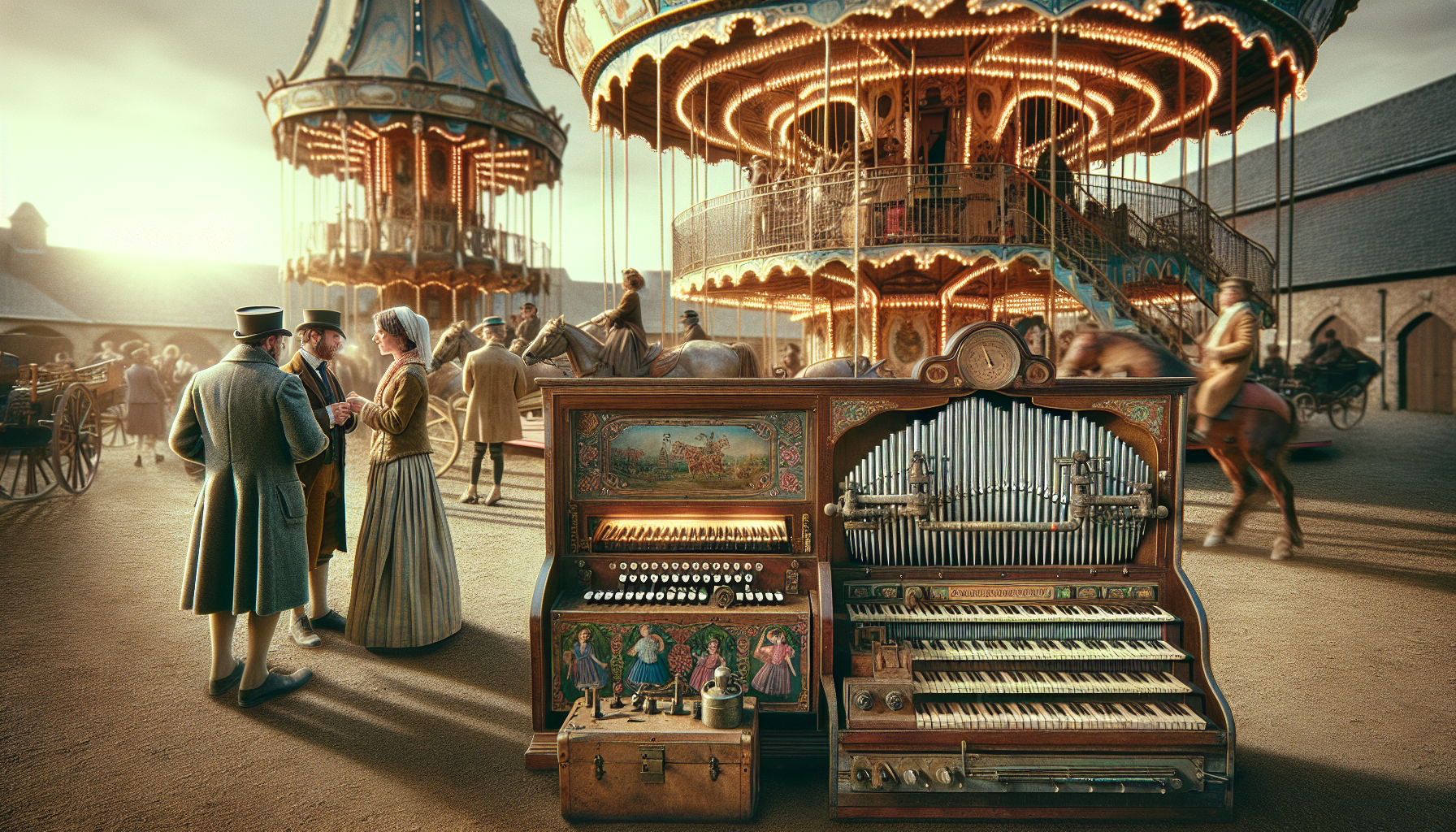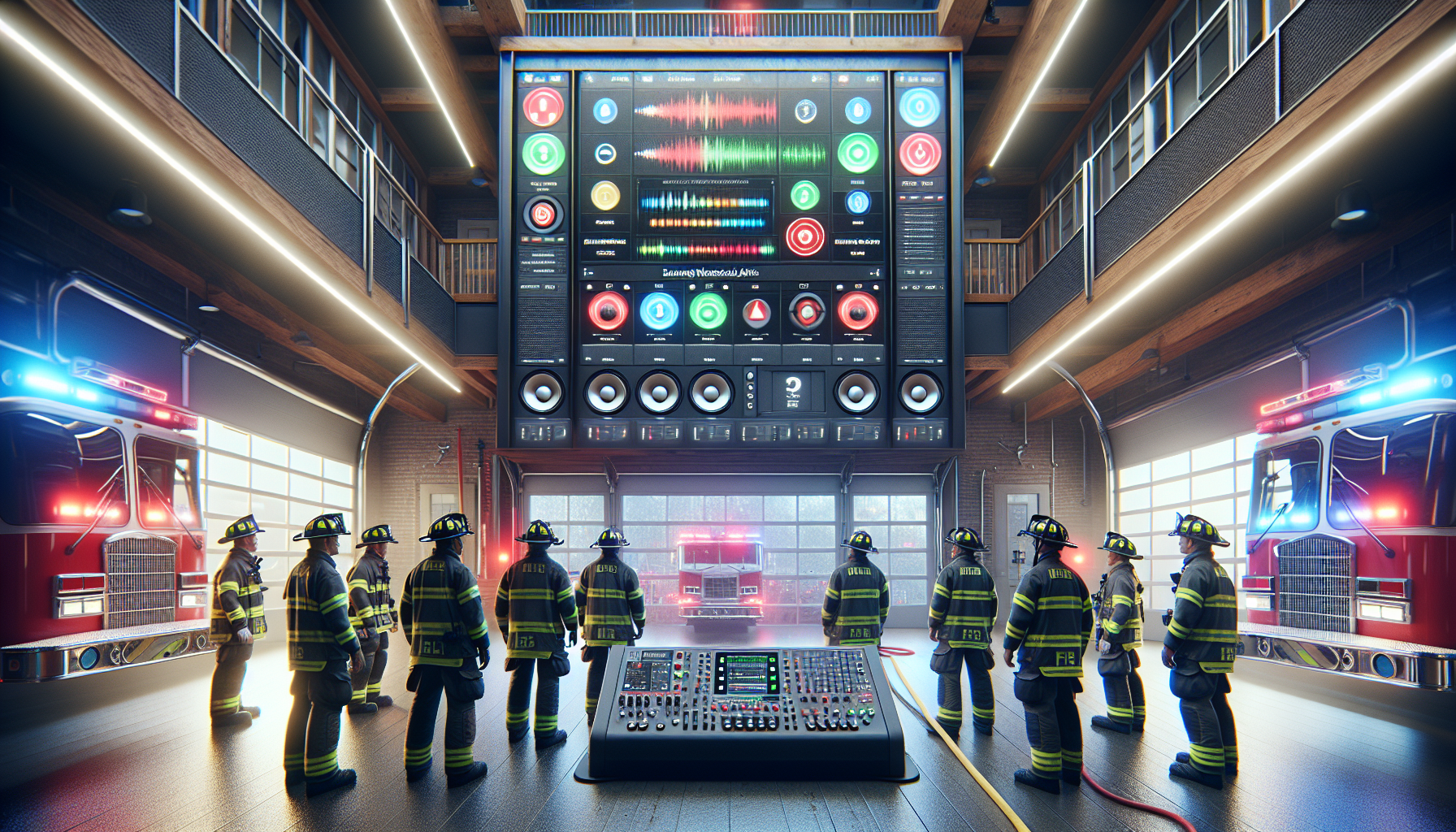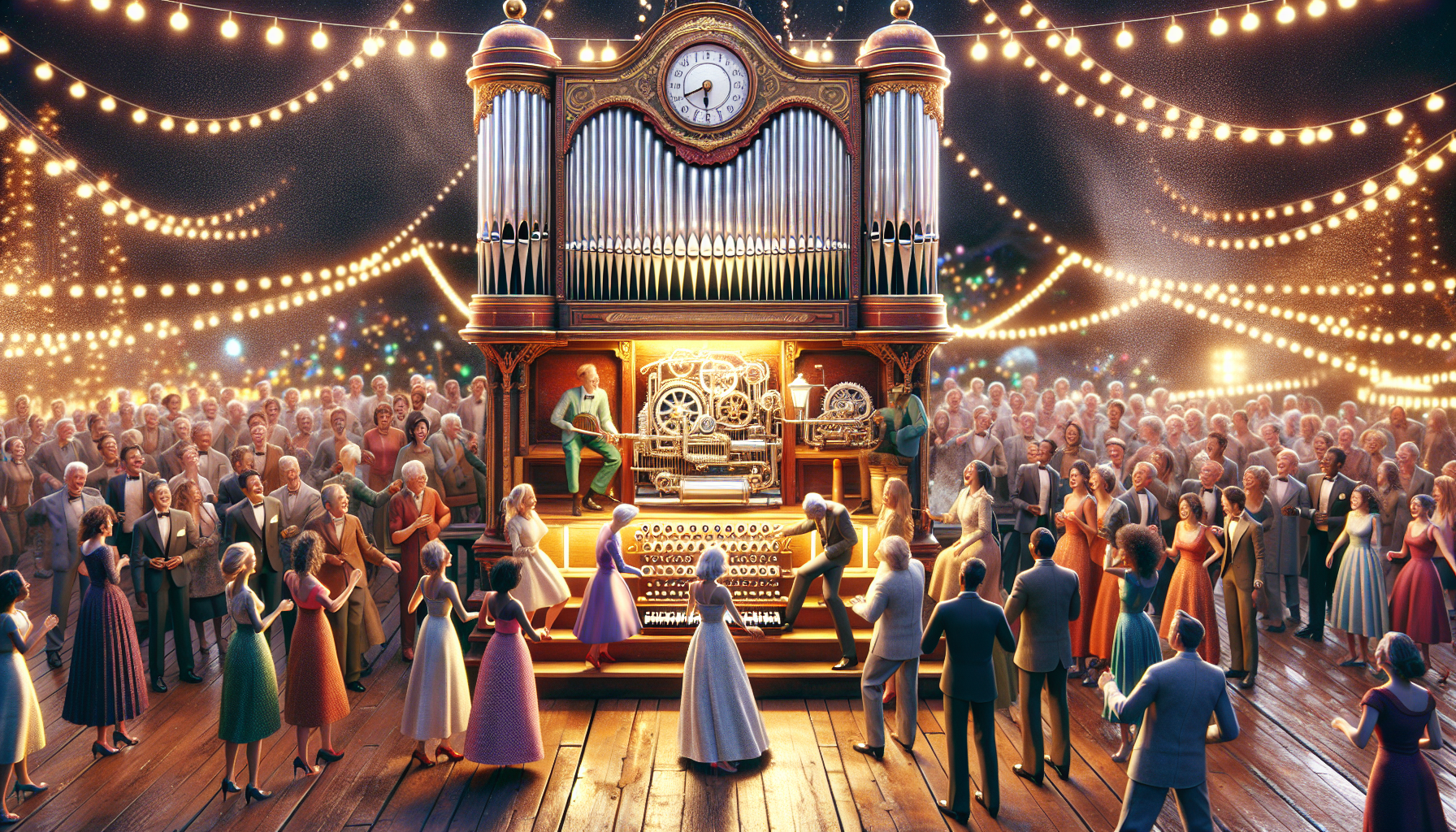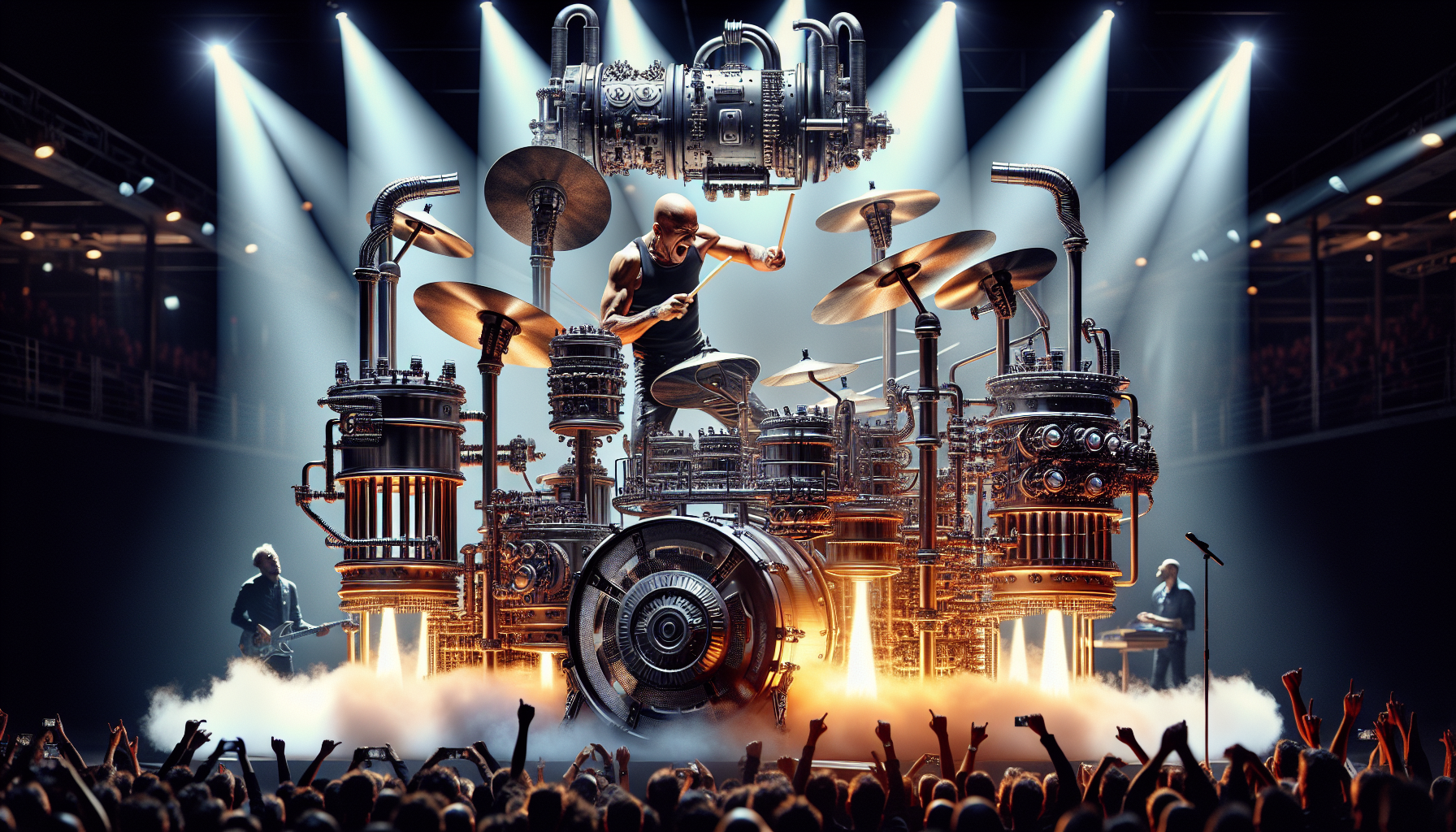🎠 Step right up, ladies and gentlemen, and prepare to be transported to a world where melodies dance through the air and the vibrant hum of historic fairground instruments awakens the child within us all. In an era where digital soundscapes dominate our auditory experiences, there exists a timeless charm and wonder in the mechanical symphonies of yesteryear. These fascinating relics of the past not only offer a nostalgic journey into the history of entertainment but also showcase the ingenious craftsmanship and creativity that brought joy to countless generations. Join us as we delve into the enchanting world of historic fairground instruments, where music meets magic under the big top.
The heart of any fairground has always been its music. Long before the advent of recorded sound, the fairgrounds were alive with the spirited tunes of band organs, calliopes, and orchestrions. These majestic instruments were the soundtrack to laughter, awe, and the thrill of the rides. Their complex mechanisms, often hidden behind ornately decorated facades, were nothing short of engineering marvels. In this article, we will unravel the history of these captivating machines, exploring how they evolved over time and the role they played in shaping the cultural landscape of their eras. From the bustling streets of Victorian England to the vibrant carnivals of America, these instruments have stories to tell, and we are here to listen.
As we embark on this journey, we’ll explore the origins and evolution of these instruments, tracing their roots back to the ingenious minds that first conceived them. The story begins in the 19th century, a period of great innovation and discovery. It was a time when inventors and craftsmen pushed the boundaries of what was possible, creating musical instruments that could mimic the sounds of an entire orchestra. We’ll delve into the technological advancements that made these creations possible, such as the development of the steam-powered calliope and the pneumatic mechanisms of the band organ. Each instrument was a testament to the creativity and resourcefulness of its makers, reflecting the spirit of an era that valued both artistry and ingenuity.
But the tale of fairground instruments is not just one of technological triumphs; it’s also a story of cultural significance. These instruments played a pivotal role in shaping the social fabric of their time, providing entertainment and escapism to people from all walks of life. They were the backdrop to countless memories, from the wide-eyed wonder of children experiencing the magic of the fair for the first time to the nostalgic smiles of adults reminiscing about days gone by. We’ll examine the impact these instruments had on society, exploring how they transcended geographical and cultural boundaries, bringing communities together in shared moments of joy and wonder.
Finally, we’ll take a closer look at the legacy of these historic fairground instruments in today’s world. In an age dominated by digital music and instant gratification, there’s a renewed appreciation for the tangible, mechanical beauty of these creations. Museums and collectors are preserving these instruments, ensuring that future generations can experience their magic firsthand. We’ll also highlight the passionate individuals and organizations dedicated to keeping this tradition alive, from restoration experts who painstakingly bring these instruments back to life to musicians who continue to perform their enchanting melodies. By the end of our journey, you’ll gain a deeper understanding of the enduring allure of fairground instruments and the timeless joy they continue to bring to all who encounter them. So, step right up and immerse yourself in this captivating exploration of a bygone era, where every note tells a story and every melody is a portal to the past. 🌟
The Fascinating Origins of Fairground Instruments
The enchanting world of fairground instruments is steeped in history, dating back centuries to a time when fairs were among the most anticipated community events. These fairs were not just about rides and games, but also about music that captivated attendees of all ages. The instruments used were not only functional but also pieces of art, intricately designed to create an ambiance of joy and wonder. Understanding the origins of these instruments provides valuable insights into their cultural significance and evolution.
Fairground instruments can be traced back to the Middle Ages, when traveling minstrels and performers would use simple instruments like drums and flutes to entertain crowds. As fairs became more structured in the 18th and 19th centuries, the demand for more sophisticated music led to the development of mechanical instruments. These early contraptions were powered by steam or clockwork mechanisms, playing tunes via punched cards or pinned barrels. Such instruments were the precursors to the grand fairground organs that would later dominate the scene.
The industrial revolution played a crucial role in the evolution of fairground instruments. With advancements in engineering and manufacturing, it became possible to create more complex and larger-scale instruments. The introduction of steam power allowed for the operation of these massive machines, which could produce a wide range of sounds. The ability to mimic entire orchestras made these instruments a popular attraction at fairs, drawing crowds with their impressive acoustics and intricate designs.
Key Developments in Fairground Instruments
Several key developments contributed to the unique character of fairground instruments. One of the most significant was the introduction of the organ pipe. These pipes, crafted from materials like wood and metal, allowed for a variety of tones and volumes. Organ builders would often experiment with different pipe configurations to produce distinctive sounds that became the hallmark of their creations.
Another important advancement was the use of automated music rolls or books. These precursors to modern music storage allowed fairground organs to play a diverse repertoire of tunes without requiring a human performer. The rolls were meticulously punched with holes that corresponded to specific notes, enabling the instrument to recreate complex compositions. This innovation not only enhanced the musical experience but also increased the versatility of fairground instruments.
🎶 Watch the video above to see some of these historic fairground organs in action and learn more about their intricate designs.
The Craftsmanship Behind Fairground Instruments
The creation of fairground instruments required a high degree of craftsmanship and artistry. Builders were not merely craftsmen but also artists and engineers, combining technical skills with an eye for design. Each instrument was a bespoke creation, tailored to the specific requirements of the fairground operator. This custom approach ensured that each organ or calliope had a unique sound and appearance.
The process began with the design phase, where builders would outline the size, structure, and aesthetics of the instrument. This included selecting materials, which often involved high-quality woods and metals that could withstand the demands of outdoor environments. The exterior was adorned with intricate carvings, paintings, and sometimes even moving figures, making the instrument a visual spectacle as much as an auditory one.
Building the instrument was a meticulous process, often taking months or even years to complete. Each component needed to be precisely crafted and assembled to ensure proper function. The organ pipes, in particular, required careful tuning to achieve the desired sound. This was a highly skilled task, as even minor imperfections could impact the instrument’s performance. The final product was a testament to the builder’s skill and dedication, reflecting a harmonious blend of art and engineering.
Comparing Traditional and Modern Craftsmanship
The craftsmanship of historic fairground instruments stands in stark contrast to modern manufacturing techniques. Today, many musical instruments are mass-produced using automated processes, sacrificing the unique character of individually crafted pieces. The table below highlights some of the differences between traditional and modern craftsmanship:
| Aspect | Traditional Craftsmanship | Modern Manufacturing |
|---|---|---|
| Production Method | Handcrafted with bespoke design | Mass-produced with standardized design |
| Materials Used | High-quality, often locally sourced | Industrial-grade, cost-effective |
| Time to Produce | Months to years | Days to weeks |
| Unique Characteristics | Each piece is unique with custom features | Uniform and consistent across units |
The Role of Fairground Instruments in Society
Fairground instruments were more than just entertainment; they played a significant role in the social and cultural fabric of their time. These instruments were central to the fair experience, providing a soundtrack to the myriad activities and attractions. Their music was a unifying force, bringing together people from all walks of life to share in the joy and wonder of the fair.
In many communities, the arrival of a fair was a major event, anticipated for weeks or even months. The music from fairground instruments was often the first signal of the fair’s presence, with melodies echoing through towns and villages. This music created an atmosphere of excitement and anticipation, drawing people to the fairgrounds. Once there, the music continued to set the tone, enhancing the experience of rides, games, and other attractions.
Fairground instruments also had a significant impact on the development of popular music. Many of the tunes played were adaptations of popular songs, marches, and classical pieces. This exposure helped spread these musical styles to broader audiences, influencing the tastes and preferences of the time. The ability of these instruments to mimic orchestral sounds also inspired developments in music production, paving the way for future innovations.
Impact on Local Economies and Traditions
The economic impact of fairs and their instruments was substantial. Fairs were often major economic events, drawing visitors from neighboring regions and boosting local economies. The presence of fairground instruments added to the allure, attracting larger crowds and increasing revenue for vendors and operators. This economic boost was especially important in rural areas, where fairs were one of the few opportunities for trade and commerce.
Fairground instruments also played a role in preserving cultural traditions. Many of the tunes played were traditional songs passed down through generations, and the instruments themselves were often crafted in ways that reflected local artistic styles. This helped maintain cultural heritage, even as societies evolved and changed. In this way, fairground instruments were both a reflection of their time and a means of preserving the past.
- Explore the history of your local fairgrounds to discover the role of music in their heritage.
- Consider visiting a museum or exhibition dedicated to fairground instruments to see these masterpieces up close.
- Listen to recordings of historic fairground organ music to appreciate their unique sound.

Conclusion
The captivating journey through the “Step Right Up: Exploring the Enchanting World of Historic Fairground Instruments” has taken us on an enthralling exploration of a lesser-known yet profoundly impactful aspect of cultural heritage. These instruments, often overlooked, serve as vibrant echoes of bygone eras, filled with stories that transcend mere notes and rhythms. As we delved into their origins, significance, and the craftsmanship involved in their creation, it became evident that these fairground instruments are not just relics of the past, but timeless treasures that continue to inspire and entertain.
We began our exploration by uncovering the rich history of fairground instruments, tracing their roots back to the vibrant fairs of Europe where they first gained prominence. These fairs, bustling with excitement and energy, provided the perfect backdrop for the majestic sounds of organs, orchestrions, and calliopes. As we learned, these instruments were not only marvels of musical innovation but also masterpieces of engineering and artistry. The intricate designs and complex mechanisms reflect the ingenuity of the craftsmen who poured their skills into creating these auditory spectacles.
The cultural impact of these instruments was another focal point of our discussion. Beyond their entertainment value, fairground instruments played a significant role in the social fabric of communities. They were central to celebrations, drawing crowds and creating shared experiences that fostered a sense of community and belonging. Their music transcended barriers of language and class, bringing people together in moments of joy and festivity. These instruments, therefore, are not just historical artifacts; they are a testament to the unifying power of music.
In our journey, we also touched upon the preservation efforts that ensure the survival of these historical gems. Dedicated individuals and organizations worldwide work tirelessly to restore and maintain these instruments, allowing future generations to experience their enchanting melodies. The meticulous restoration processes not only safeguard the physical structures but also preserve the intangible cultural heritage they represent. These efforts highlight the importance of preserving our history and underscore the responsibility we share in protecting our cultural legacy.
Furthermore, we explored the modern relevance of these instruments. While their golden age may have passed, the magic of fairground instruments continues to captivate audiences today. Their unique soundscapes have found their way into contemporary music and media, influencing artists and composers across genres. This enduring appeal speaks to the timeless nature of their charm and the continued fascination they inspire in listeners of all ages.
As we conclude our exploration, it is important to reflect on the broader implications of our journey. The enchanting world of historic fairground instruments is more than a collection of musical devices; it is a celebration of creativity, innovation, and cultural expression. By understanding and appreciating these instruments, we gain insights into the values and aspirations of those who lived in times past, and we are reminded of the enduring power of music to connect us across time and space.
In light of this rich history and cultural significance, I encourage you, dear reader, to delve deeper into the world of fairground instruments. Whether it’s through visiting museums, attending performances, or exploring online archives, there are numerous ways to continue this fascinating journey. Engage with this heritage, share your experiences with others, and perhaps even draw inspiration for your own creative endeavors.
Music, in all its forms, has the power to inspire and unite us. By embracing the enchanting world of historic fairground instruments, we contribute to the preservation of a vibrant cultural legacy that enriches our understanding of the past and informs our present. So, step right up and immerse yourself in this magical world—let the melodies transport you to a time where the air was filled with wonder and the sounds of fairground instruments brought joy to all who listened. 🎶✨
For further reading and exploration, consider visiting resources like The Museum of Music Machines and Fairground Heritage Trust, where you can find more information and delve into the enchanting details of these historical marvels. Let us continue to celebrate and share the beauty of these remarkable instruments with the world.
Toni Santos is a visual historian and creative artisan whose work channels the bold spirit of the steam-powered era—a time when imagination, mechanics, and ambition converged to reshape the modern world. Through richly detailed visual narratives and handcrafted design, Toni celebrates the legacy of steam innovation as both an artistic and technological revolution.
Driven by a passion for mechanical aesthetics, forgotten inventions, and industrial-age ingenuity, Toni reimagines the world of steam through illustrations, tactile artifacts, and storytelling that capture the poetry of pressure, motion, and invention. From piston-driven engines to brass-detailed diagrams, each piece reveals how steam wasn’t just power—it was promise.
With a background in visual design and historical research, Toni brings a craftsman’s eye and a dreamer’s heart to the stories of tinkerers, inventors, and visionaries who shaped the 19th century. His work doesn’t merely document machines—it honors the culture, courage, and creativity that drove a world to reimagine itself through gears, valves, and vapor.
As the creative voice behind Vizovex, Toni shares curated articles, reconstructed blueprints, and visual interpretations that bring this industrial past to life. His collections serve as a tribute to:
The elegance of steam-era design and innovation
The human stories behind great mechanical feats
The aesthetic beauty found in function and form
The echo of invention in today’s creative world
Whether you’re a history lover, a fan of steampunk, or an admirer of antique technology, Toni welcomes you into a world where art and machinery fuse, one cog, one drawing, one rediscovered marvel at a time.




